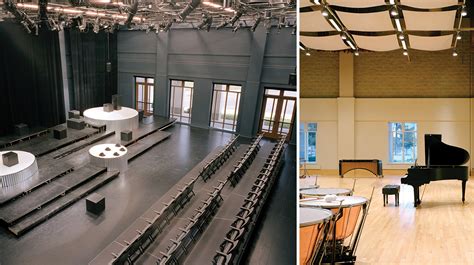5 Must-Know Facts About Sarmiento 440
In the heart of Buenos Aires, Sarmiento 440 stands as a testament to the city’s rich history, architectural brilliance, and cultural significance. This iconic building, nestled in the vibrant neighborhood of Monserrat, is more than just a structure—it’s a living narrative of Argentina’s past and present. Whether you’re a history buff, an architecture enthusiast, or simply curious about Buenos Aires’ hidden gems, here are five must-know facts about Sarmiento 440.
1. A Masterpiece of Beaux-Arts Architecture
Sarmiento 440 is a prime example of the Beaux-Arts architectural style, which flourished in the late 19th and early 20th centuries. Designed by the renowned architect Juan Cronthaler, the building showcases intricate detailing, grand facades, and a harmonious blend of classical and modern elements. Its ornate balconies, sculpted reliefs, and imposing entrance make it a standout in the city’s architectural landscape. This style, characterized by its grandeur and attention to detail, reflects Buenos Aires’ ambition to mirror European elegance during its “Golden Age.”
Architectural Insight: The Beaux-Arts style, imported from France, was a symbol of sophistication and progress in Buenos Aires. Sarmiento 440’s design incorporates elements like Corinthian columns and symmetrical layouts, typical of this movement.
2. A Witness to Argentina’s Political History
Sarmiento 440 has played a silent yet significant role in Argentina’s political history. Located just blocks away from the Casa Rosada, the official seat of the Argentine government, the building has been a vantage point for many historic events. During the 1950s, it housed offices for government officials and was a hub for political activity. Its proximity to Plaza de Mayo, the site of countless protests and rallies, further cements its place in the nation’s narrative.
"Sarmiento 440 stands as a silent observer of Argentina’s tumultuous political journey, its walls echoing the whispers of history."
3. Home to the National Academy of History
One of the building’s most notable occupants is the Academia Nacional de la Historia de la República Argentina (National Academy of History of the Argentine Republic). Founded in 1938, this institution is dedicated to preserving and promoting Argentina’s historical heritage. Sarmiento 440 houses its extensive library, archives, and exhibition spaces, making it a treasure trove for historians and researchers. The academy’s presence adds an intellectual and cultural layer to the building’s significance.
Key Takeaway: Sarmiento 440 is not just an architectural marvel but also a hub for historical scholarship, bridging the past and present.
4. A Symbol of Urban Revitalization
In recent years, Sarmiento 440 has become a focal point for urban revitalization efforts in Buenos Aires. As part of the city’s push to restore its historic buildings, the structure has undergone careful renovation to preserve its original charm while adapting it for modern use. This balance between preservation and innovation reflects Buenos Aires’ commitment to honoring its heritage while embracing progress.
Pros of Revitalization: Preserves cultural identity, attracts tourism, and boosts local economy.
Cons of Revitalization: High costs, potential for over-commercialization, and risk of losing historical authenticity.
5. A Hidden Gem for Tourists and Locals Alike
Despite its historical and cultural importance, Sarmiento 440 remains relatively unknown to many tourists. This makes it a hidden gem for those looking to explore Buenos Aires beyond the typical landmarks. Visitors can marvel at its architecture, delve into its history, or simply enjoy the ambiance of the surrounding neighborhood. For locals, it’s a source of pride and a reminder of the city’s enduring legacy.
How to Visit:
- Start at Plaza de Mayo, a short walk from Sarmiento 440.
- Admire the building’s exterior, noting its Beaux-Arts details.
- Check if the National Academy of History is open for tours or exhibitions.
- Explore the nearby Monserrat neighborhood, known for its historic charm.
Who designed Sarmiento 440?
+Sarmiento 440 was designed by architect Juan Cronthaler, a prominent figure in Buenos Aires’ architectural scene during the early 20th century.
Can visitors enter Sarmiento 440?
+Access to the interior depends on the activities of the National Academy of History. Visitors are advised to check for guided tours or public events.
What makes Sarmiento 440 historically significant?
+Its proximity to key political sites, its role in Argentina’s history, and its status as home to the National Academy of History make it a significant landmark.
How can I learn more about the building’s history?
+Visit the National Academy of History’s website or explore archives related to Buenos Aires’ architectural and political history.
Sarmiento 440 is more than just a building—it’s a portal to Buenos Aires’ soul. Its architectural grandeur, historical significance, and cultural role make it a must-visit for anyone seeking to understand the city’s essence. Whether you’re strolling past its facade or delving into its archives, Sarmiento 440 offers a unique glimpse into the heart of Argentina’s capital.
